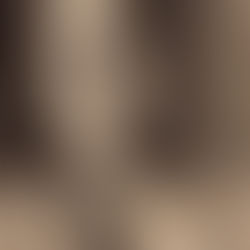Witnessing Partition through AI
-Ramanjit Singh
I took some of the partition related photographs and ran them through the Artifical Intelligence based image enhancer software to see how the old black and white images can be colorized, unblurred and enhanced. Here are some results.
The following photograph is of a Sikh refugee family taken by Margaret Bourke-White for the Life magazine. When I looked at this picture, I noticed the little girl standing at the back of the room. Her face tells a lot about the pain of forced migration and of the uncertain future that lies ahead of her.

Taking her snapshot and running it through AI image enhancer reveals the clear, unblurred photogaph of the child.

One of the great unknowns about Partition is the effect it had on young children who saw the violence first hand and carried that trauma the rest of their lives.
These enhanced photographs bring to life the events of partition which are often emotionally detached from us. The lack of color and clarity often misses the human element and fails to convey the trauma of that tragic event. History becomes obscure, unimpactful, when the very faces of people we are seeing are unknown, too distant for us to relate with.
With color and clarity, we can now use AI to make history more relatable, the distance of time can now be bridged with the use of artificial intelligence.
The next photograph taken by photojournalist Max Desfor shows a queue of children lining up for water in a Muslim refugee camp in Delhi. I first colorized the photograph and then took one of the faces of the children to bring it back to life. Refer to the context of this photograph.
During the the Partition of India, Muslim refugees, evacuated from areas of unrest in New Delhi, line up for water with any type of container at Purana Qila, the old fort, in New Delhi, India, on September 17, 1947. This is the only water tap within the camp, where it takes anywhere from one to three hours to get water. There were an estimated 20,000 people at this refugee camp with little food or water and just the barest of housing facilities. The people here do not know what plans their government has for them or how long they will stay.

Now using AI to enhance the face of one of the child.

Here are some additional photographs.



Enhancing one of the faces in the crowd.












You can view original, black and white photographs here in the Photograph section of this Forum.
I sometimes think that I'm making a "mistake" of identifying the refugees as Hindu or Muslim or Sikh. Knowing full well that some of the consumers of this content will use it to further spread hatred amongst us. The purpose of this is not to create a “us versus them” narrative and further divide the people. Its purpose is to convey the sentiment that people of Punjab suffered regardless of their religion or creed. We suffered, all of us suffered, and every one of these photographs shared here is a representation of our community, our Punjabi community, that fell into an orgy of violence, which to this day is still struggling to understand.


















A fantastic piece of work paaji. Lovely but also painful to see the photos in colour. The last picture in particular.
I think it's important to highlight the refugees as Hindu, Muslim or Sikh. If anything, it highlights that these atrocities were caused across all communities of Panjab.
We should learn from this horrific set of events to prevent any further re-occurence.
PS what tool / AI engine did you use for this work?